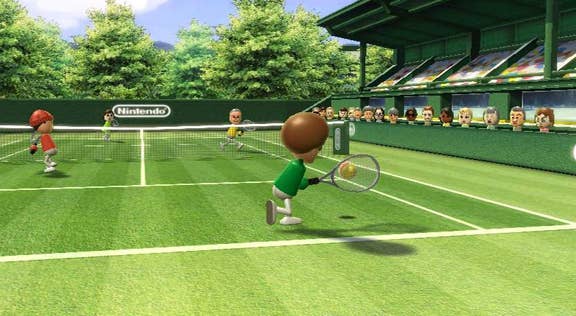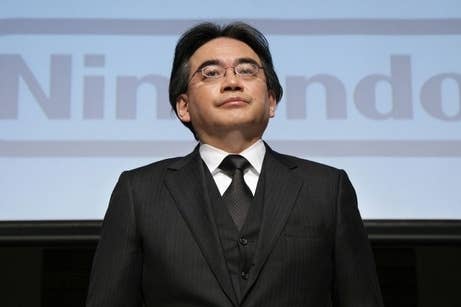The life of the Nintendo Wii - through the eyes of Satoru Iwata
Chris Morris takes a look back at his many conversations about the Wii with Nintendo's leader
No one had a better view of the development and evolution of the Wii than Satoru Iwata.
Throughout the console's seven-year life-cycle, the president of Nintendo acted as its biggest cheerleader, defender and, at times, critic. He was a driving force in the company selling over 100 million systems and is now trying to spur that sort of interest in the Wii's successor.
I've been extremely fortunate to speak regularly with Iwata. And since 2005, he and I have been talking about (among other things) the Wii. At the time, the system - which was still being called by its code name 'Revolution' - was viewed to be a hard sell. The controller had only been shown to a handful of reporters - and analysts worried that Nintendo had pressed its luck far enough with the Nintendo DS, whose dual screens were (at the time) viewed as being a radical departure from the norm.
Iwata, though, never wavered in his confidence.
"It's going to be a challenge to take something that's a new concept and new idea and convey to the public ... how to understand it, but honestly I think the Revolution controller is going to be a lot easier to convey to the public than the DS was as a system," he said. "We've learned a lot in terms of how to communicate to people these new and different ideas and because of the experience we had with the DS, we're much more prepared."
Part of the reason for that assuredness was his own experience when using the controller. Iwata might have come from a game development background, but that didn't make him a master of all genres.
"I was a developer for many years before my current role, but I've never been a very good gamer," he said. "I've never been able to control a first-person shooter, but as soon as I used the Revolution controller, I found it very easy to control the game. So, I think that's a genre that's particularly well suited for the controller."
And while Microsoft and Sony were busy touting the high definition revolution, Iwata stayed laser focused on widening the gaming audience. Of course, the company succeeded at that - but ironically, the lack of high definition graphics later proved to be one of the turning points that marked the beginning of the end for the Wii.
"Until now, within a single household, we've had family members who play video games and family members who don't play video games - and they've been very separate," he noted. "Gradually, the barriers between those two have gotten stronger. ... Today, if you don't understand the controller, you're not able to enjoy video games. ... We expect [the Revolution controller] to become the standard in video game controls."

That prediction proved to be a bit too optimistic, but a year later, buzz was building fast about the Wii. Nintendo was gaining praise for its declaration that games for the system would cost $50, instead of the then controversial $60 for the Xbox 360 and PlayStation 3 - and the Virtual Console was making old school gamers giddy.
What many don't recall, though, is that there was some debate on whether titles downloaded from the virtual console would belong to the gamers who bought them. Nintendo certainly considered going in the other direction.
"We can set some limitations as to the time period a piece of downloaded content can be played," said Iwata. "Or, we may opt to let users play as long as they want. This gives us a flexible business model."
Those plans never came to fruition, of course. Nor, for that matter, did an idea about Nintendo using the Virtual Console to release must-have new, cheap first party games. But it, too, was considered.
"If we can come up with an addictive, but simple title - such as Tetris 15 years ago - my attention should be focused on containing costs," said Iwata. "So, I would make it available through the Virtual Console. I think the opportunity for ourselves will be much larger than software that costs $50-$60. ... Of course, there are a number of people waiting for a 'masterpiece' title. For those games, we'll utilize traditional distribution channels."
Flash forward to 2008. The Wii is a quantified phenomenon. Retailers are unable to keep units in stores - months after it was released. And Nintendo wasn't able to guarantee people would be able to easily find one in the upcoming holiday.
It was the catbird seat of gaming - but problems were already starting to brew. Core gamers were miffed that the Wii seemed tailored for casual players - and those concerns were stoked by Nintendo's E3 press conference, which went by without a mention of Mario or Zelda - though it did spent a lot of time on Wii Music.
It was the first time Nintendo had to apologize for the Wii.
"If there is any perception that Nintendo is ignoring the core gamers, it's a misunderstanding and we really want to get rid of that misunderstanding by any means," said Iwata. "We are sorry about [the E3] media briefings, specifically for those who were expecting to see Nintendo show something about Super Mario or Legend of Zelda.
"However, the fact of the matter is the so-called 'big titles' need a long, long development period. ... We really didn't think this year's E3 media briefing was the time to do so."
Ultimately, core gamers never fully returned to the Wii. While New Super Mario Bros. was a hit, gamer interest was shifting more and more to the online mode in games like Call of Duty. Within three years, third party publishers had turned their backs too. By 2011, almost all of the year's biggest games bypassed a Wii port.
In 2009, though, the Wii was in the midst of its heyday. In December of that year alone, the system sold 3.8 million units, according to The NPD Group - nearly three times the number of PS3s that were sold.
That same year, Microsoft announced "Project Natal" at its E3 press conference, which would go on to become Kinect. As Iwata had predicted in 2005, the competition was coming.
That raised questions about how Nintendo planned to stay competitive in the future. The Wii was born of the "Blue Ocean" strategy - a corporate philosophy that encourages creating new demand in an uncontested space (a "Blue Ocean"), rather than going head-to-head with competitors in an existing industry (a "Red Ocean").
"So for the time after the Wii U [arrives in stores], I believe both systems will be on the market for some time"
Satoru Iwata
With the competition coming, could Nintendo find another Blue Ocean? Or was it prepared to fight to keep the increasingly red one it was in? Iwata, at the time, said the company was investigating whether branching in a new direction or making an iterative step from the Wii is the right move.
"We have the greater potential to create the blue ocean market when people are skeptical," he said. "So when we realize that other people are coming into [this] market ... there are two things we [can] do. One is trying to intensify the fun nature of something we are already doing. The other is try to create a new blue ocean."
Two years later, we had our answer - the Wii U was unveiled at E3.
Since the system used Wii controllers and was fully backward compatible, there were some obvious questions about the fate of the once-trendsetting console. Nintendo, said Iwata, had no plans to immediately sunset the system, as it did with the GameCube.
"When we consider the people who are first to purchase Wii U and the people who are going to purchase the Wii, I don't think there will be a great overlap between the two," he says. "I believe that those who are waiting to purchase the Wii now are the so-called 'late adopters' and the people waiting to purchase the Wii U are early adopters. So for the time after the Wii U [arrives in stores], I believe both systems will be on the market for some time."
(You'll have to decide for yourself how long "some time" implies.)
At that point, there was no denying the lack of third-party interest in the Wii. Even Nintendo couldn't avoid it. But Iwata did have some ideas as to why the system had become a low priority for partners - though it wasn't what you might think.
He acknowledged the lack of HD graphics was partially to blame, but also took partners to task for not using their best talent. (And, he said, he hoped the Wii U would lure back the A-teams at other studios.)
"In the US, people are very attracted by the sports and the shooter games - and the quality of those graphics are very important," said Iwata. "As a result, it was not necessarily the case to have the software [for the Wii] developed by the top developers of the software companies. And, as a result of that, Wii software was not able to succeed to the extent that third parties wanted [it] to. For this time around, we are able to expect the top [developers] for the top third parties to make games for the Wii U."
Monday, with the short statement on the Wii's product page that read simply "production over," Nintendo quietly put an end to its Revolution in Japan. And while US production continues, according to Nintendo of America reps, it's only a matter of time.
The Wii U, meanwhile, still hasn't caught on like the company had hoped - and Nintendo has understandably chosen to focus virtually all of its efforts on that system.
While gamers and gaming insiders have blamed the Wii U's soft start on a variety of factors from a weak lineup of games to a lack of real innovation, Iwata has another theory - and it's a surprising one. The company, he believes, may have gotten spoiled by how easily audiences embraced the Wii, which resulted in some missteps as it rolled out its new system.
"We are to blame," he said. "We relaxed our [marketing] efforts, so the consumers today still cannot understand what's so good and unique about the Wii U. Because we're always trying to be unique, it takes some energies on our side to [make] people understand the real attractions about whatever we are doing."

